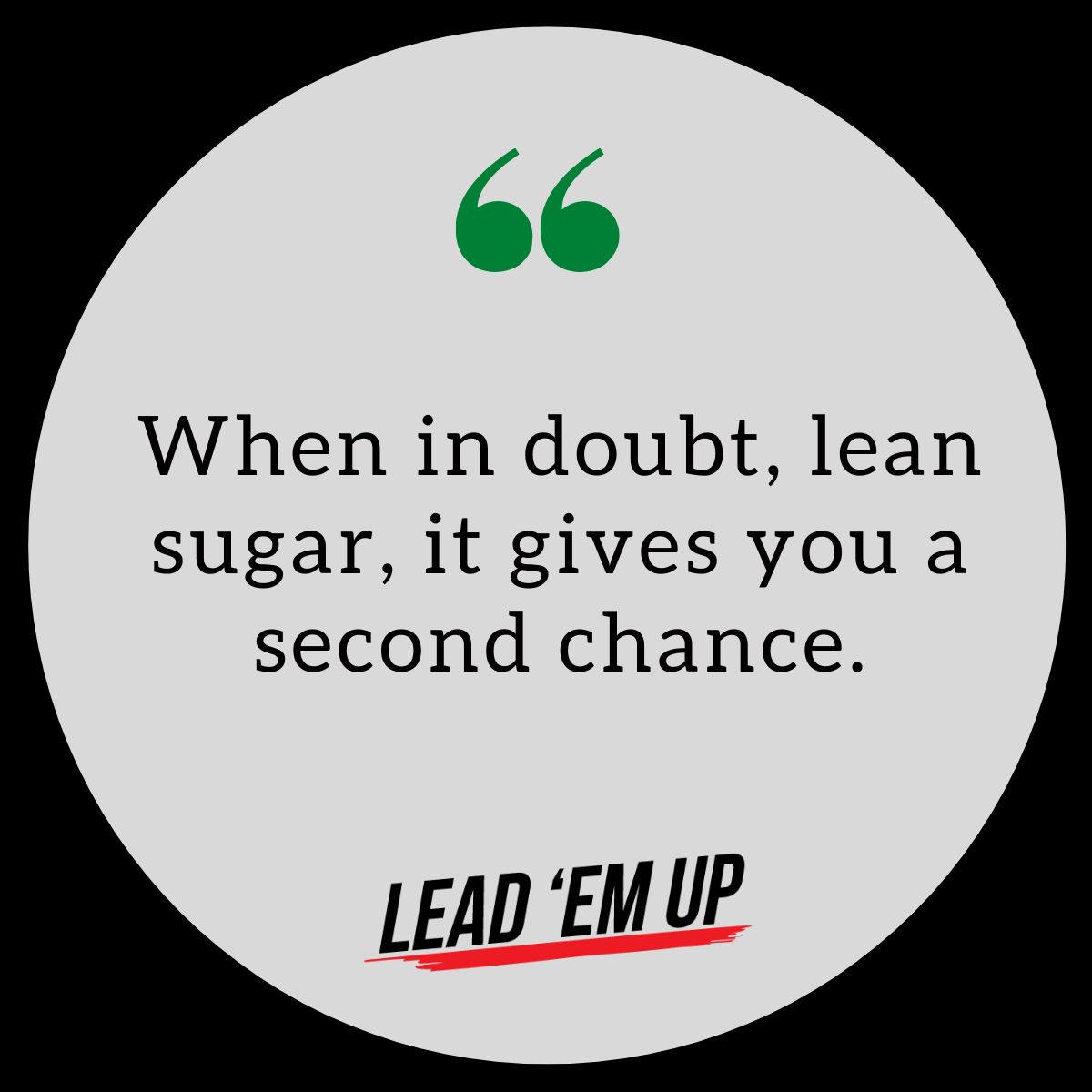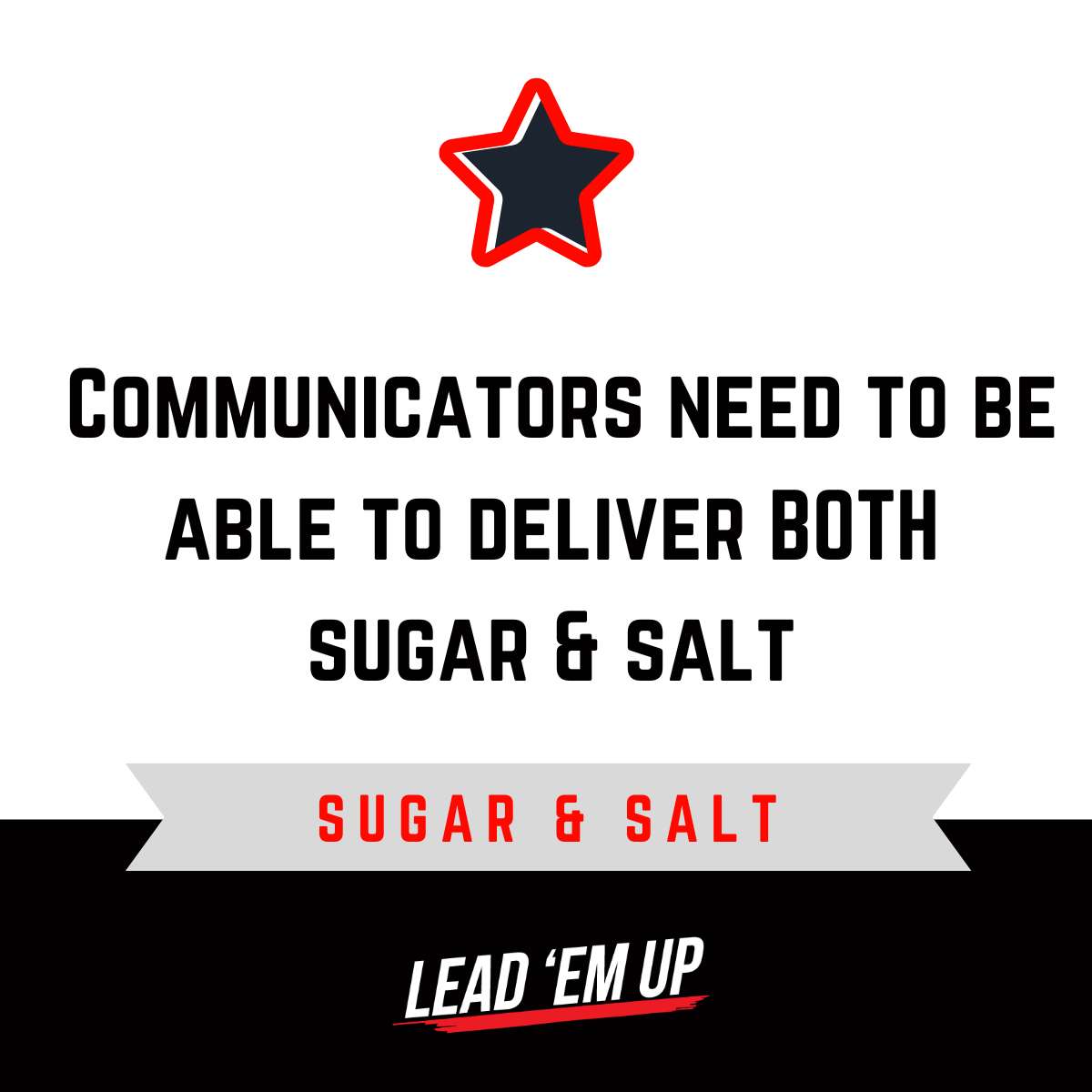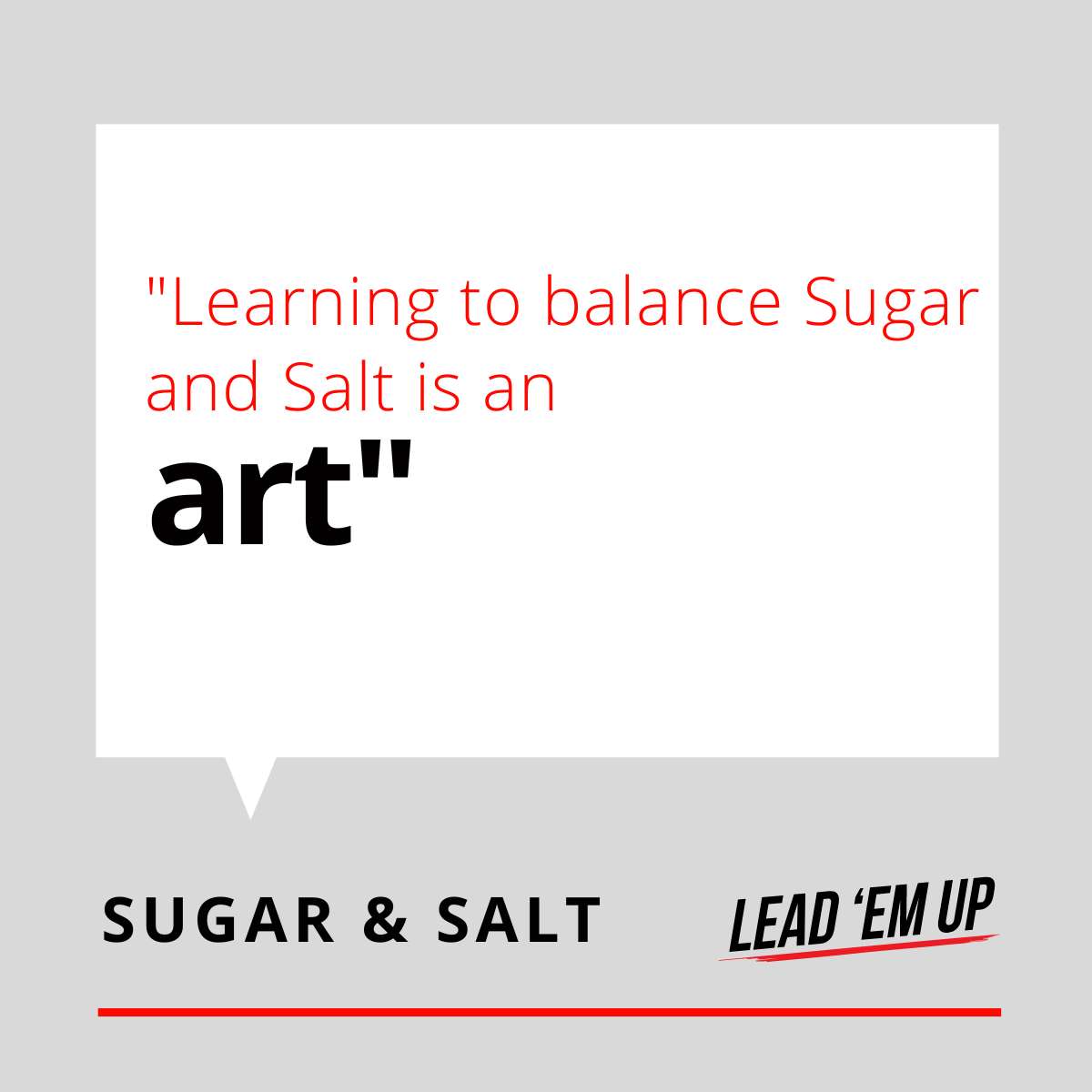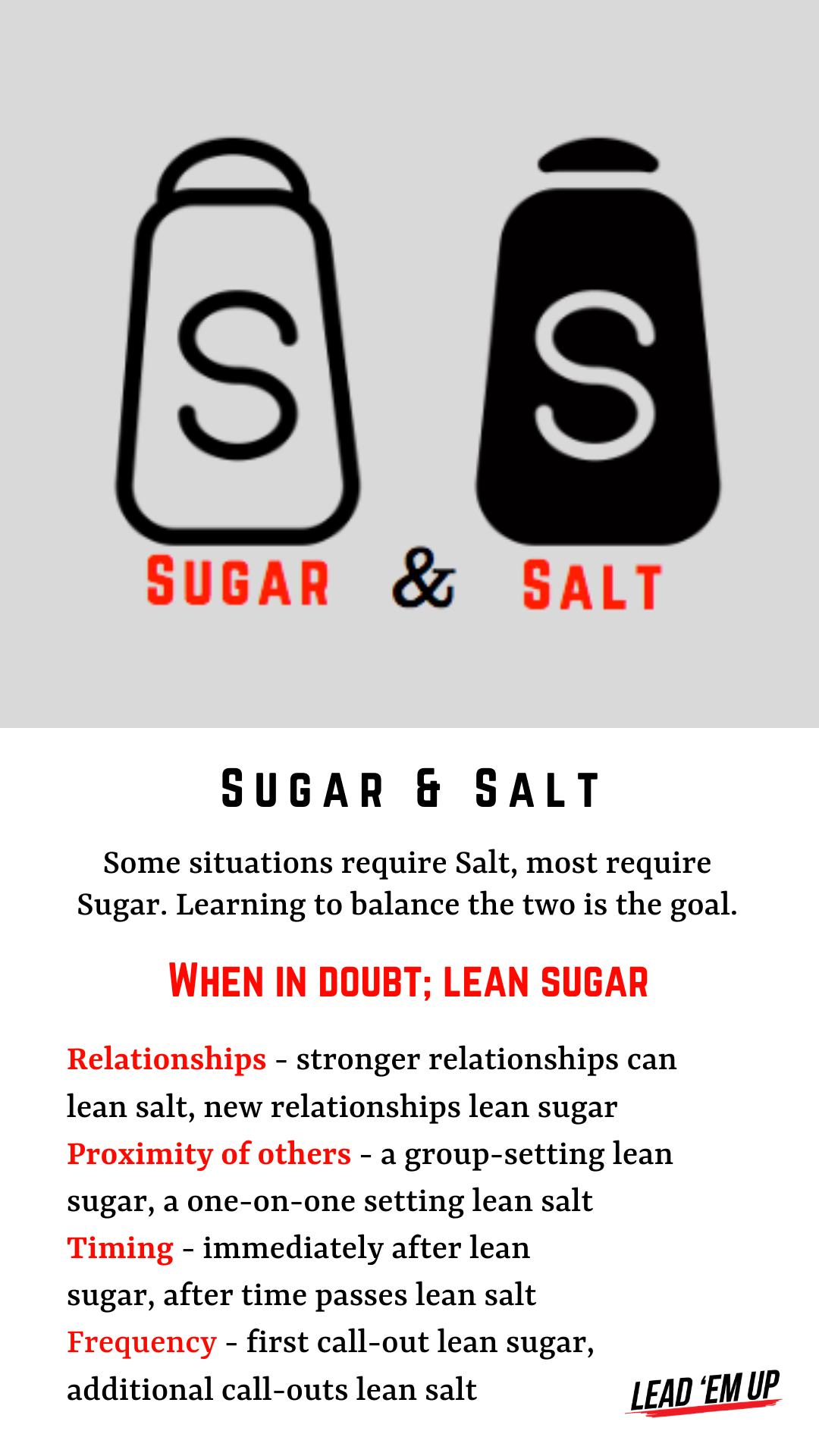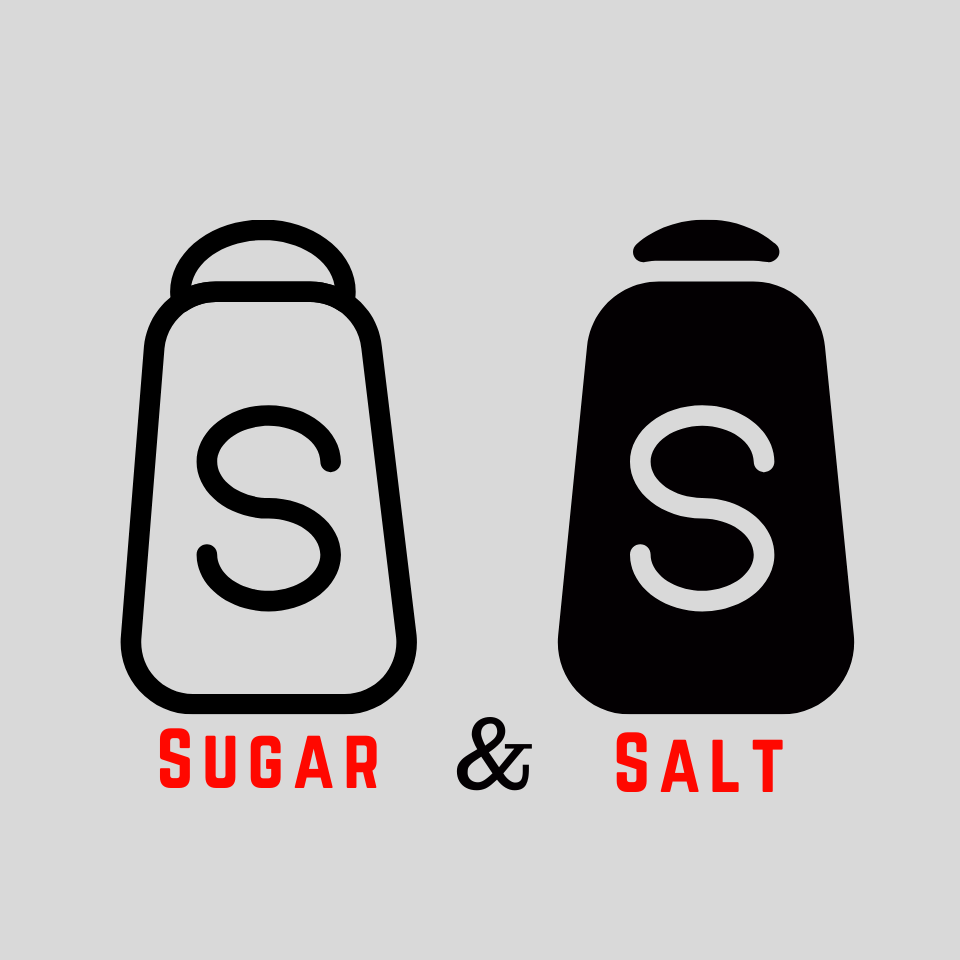

Overview
Sugar and Salt is a communication exercise helping your students learn the “art” of communication with one another.
- Your student will gain a deeper understanding of their personal communication style …are they more sugar or salt?
- Your student will get practice delivering communication and observing the communication of others to help them gain a better perspective and increase learning.
- Your student will learn four guardrails that’ll help them better balance sugar and salt in moments of communication with others.
Lesson Plan
Some conversations require Salt, most require Sugar, and learning to balance the two is key.
Sugar is when you speak with gentleness, respect, kindness, and love. Think of the phrase “sugar-coating your words” – it’s the practice of covering your words with “sugar” to make them sweet.
Salt is when we are direct, blunt, speak the truth, and “say it like it is.” If not careful, too much salt can leave a salty taste in one’s mouth, and like “pouring salt in a wound” it can burn.
Communication is an “art” and unlike math or science, it’s not an exact equation. Two cups of sugar plus two cups of salt doesn’t always create perfect communication.
In communication, there are many dynamics we need to consider, four in fact.
During the exercise, you will teach the four dynamics which we call Guardrails. Just like in real life, Guardrails are designed to guide and protect us, in Sugar & Salt Guardrails serve the same purpose of guiding and protecting us in our conversations.
For each simulation bring two students up to the front and have them role-play the scenario while trying to appropriately balance sugar & salt. (Try to get different students for each of the simulations to give more students practice). After each attempt, the remaining students score the attempt determining if it was too salty, too sugary, or the perfect balance.
Important: don’t share the Guardrail theme until after they’ve simulated the role play. Use the Guardrail to serve as a teaching point as you all discuss and learn from the simulation.
Guardrail 1: Timing
Simulation 1
One of your friends just received a very poor grade on a test and is visibly upset. You see them upset. You also know they didn’t study much for it. After class, you get to talk with them in the hallway.
Simulation 2
During lunch one of your classmates chose not to clean up their trash after they ate. The teacher called out the student and told the rest of the class that if the cafeteria isn’t cleaned after the next use, we’d all get in trouble. After class, you get a chance to talk to your classmate who left the mess.
Teaching Point
Timing has a major influence on our sugar & salt balance. When emotions are high, sugar should serve as the lead as salt may increase emotions. Even when salt needs to be delivered, finding the right time to deliver the salt will make a huge difference.
Guardrail 2: Frequency of Conversation
Simulation 1
You’re working on a group project and one of your classmates refuses to listen to anyone in the group. They want to do their own thing and think they know it all. You’re frustrated and decide to say something after class to them.
Simulation 2
Same situation as above with one difference, your partner in the group project has already been talked to by 3-4 other group members about the issue and still hasn’t changed. You’ve had enough and decide to address the person one final time. After class, you decide to talk to your classmate.
Teaching point
As the frequency of conversations grows, our salt can often grow as well. If something has never been brought up, sugar may be all you need. Coming at someone with salt when bringing something up for the first time may create tension. It’s also important not to confuse “frequency of thought” with “frequency of conversation” – just because you’ve been thinking about it for an extended period of time, be careful not to allow that to carry over in excess salt.
Guardrail 3: Proximity of Others
Simulation 1
The teacher views you as a leader and a helpful student in the class so the teacher shares with you how one of your classmates is struggling a bit in class. The student gave the teacher permission to tell you with the hopes you’d be able to tutor them. You see the student in the hallway with a group of classmates and decide to talk to them about their classroom struggles.
Simulation 2
Same situation as above with one difference, the classmate is still in the hallway but this time is alone when you go to speak with them.
Teaching Point
Whether something is brought up in a group setting compared to in-person makes all the difference. The same words and the same circumstances when brought up in front of others can feel much saltier than those same words and the same circumstances brought up with someone one-on-one. Be conscious of the proximity of others and adjust your sugar and salt accordingly.
Guardrail 4: Relationship
Simulation 1
Your teacher shares a cool update that if everyone turns in their assignment on time and scores over 80% no one will have to complete the final assignment. Unfortunately one of your classmates is telling everyone they don’t care and may not do the assignment. You decide to talk to your classmate after class.
Simulation 2
Same situation as above with one difference, the classmate saying they aren’t going to do the assignment is one of your best friends who you’ve known for years.
Teaching Point
The level of your relationship with the other person has a major effect on your sugar and salt balance. In simulation #2 you allow yourself to offer much more salt than in simulation #1 based on the relationship.
Additional Notes to Make at the Conclusion of the Exercise
- It’s important to know which way you lean as a person, sugar or salt. Recognizing which way you lean will help you know which one you need to work intentionally to produce.
- If you lean salt, we encourage you to “keep it real” and “say it like it is” on all the good things you see as well. People who lean toward salt should be the most encouraging person in the room, don’t reserve your salt only for the negative.
- When in doubt, lean sugar, it gives you a second chance. If you aren’t sure and you lean salt, it may produce tension that needs to be cleaned up.
Student Growth Areas
Exercise Length
Language Guide
Sugar
Communicating with respect, kindness, and love
Salt
Communicating in a very direct manner, straight-forward and frank
Exercise Reminder Card
To emphasize and reinforce the lessons learned in this exercise with your students, download and share this graphic with them 24 hours after completing the exercise.
Quiz Questions
Use these questions below to engage after you have taught the exercise.
- What does it mean to communicate with Sugar?
- What does it mean to communicate with Salt?
- Share and explain at least two of the four Guardrails.
At Home
Teachers, use the below question, reflection, and action to engage parents, guardians, and other family members in the lessons learned in this exercise.
Suggestions on how to use: Email to parents the day you have taught this lesson, add it to the materials you send home.
- Question: what does it mean to communicate with Sugar and Salt?
- Reflection: Why do leaders need to learn the balance of the two?
- Action: Share an example from the lesson with your family and illustrate what the perfect blend of Sugar and Salt would look and sound like
Teacher’s Reflection
Teachers, take a moment to reflect on the lesson and how you can lead by example to your players.
Teaching Support
If you are ever in need of help or advice on any exercise please reach out to us below.

